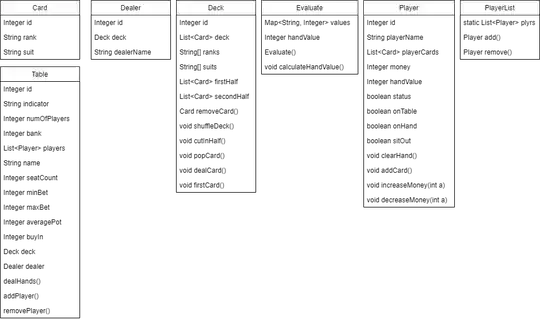I also have Controllers where I can create table, create users add users to table, deal hands simulate user bets using PostMan (Above classes are game engine classes, I did not share controllers in spring boot. It is all API)
Somehow, I am not able to stitch them all together as a complete game.
Here is what I tried:
Finite State Machine: I think possible states in the game is: Collect Blinds, Deal Hands, GamePlay (where fold, bet and raise takes place), ShowDown. Then I tried to understand what would happen in states and got confused.
Then I tried to implement the logic with chain of responsibility, it looks like we have a chain of activities: collect blinds, deal hands, gameplay (itself is also chain of actions like folds, bets, raises) and updates inside them.
In practice, I was not able to achieve this. Does anyone has an idea how to put them together using design patterns?
